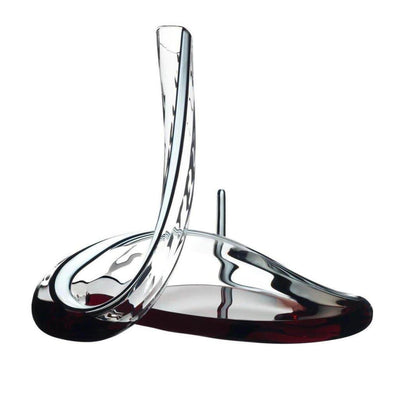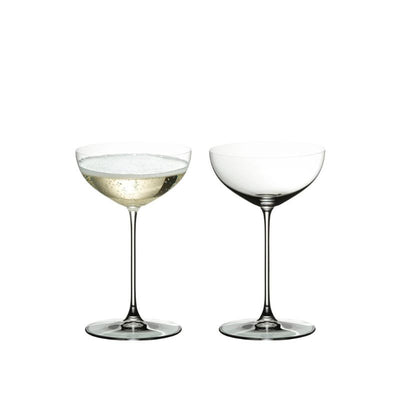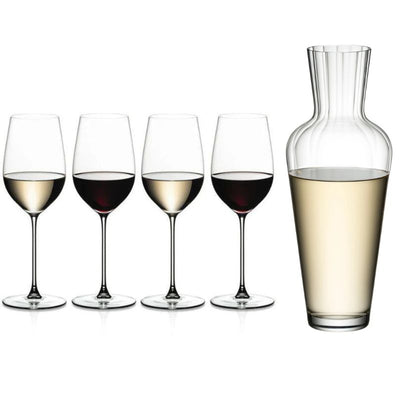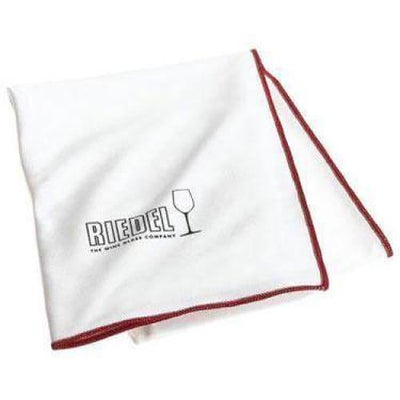Canadian Wine's Cool Climate Revolution
As today is the National Flag of Canada Day, commemorating that at the stroke of noon on February 15, 1965, Canada's red and white maple leaf flag was raised for the very first time on Parliament Hill, I thought it was apt that we take a look at “What's good and bad about wine in Canada” which is actually the title of an article Jancis Robinson wrote for The Financial Times…. 18 years ago!
Canadian wine has been popping up on my radar more and more recently. From the Inniskillin Gold Niagara Vidal Icewine 2022 I had at SoLa, in London, a few weeks ago (a luscious, golden wine with rich, intense aromas of apricot, honey, and peach. On the palate, the wine is sweet and velvety with a perfect balance of acidity), best enjoyed out of these glasses, to numerous articles and mentions in my research for my annual look at how the wine world is coping with climate change, and on checking my Vivino history (a great app, if you haven’t got it, well worth the download) I found I’d had an Okanagan Valley Pinot Noir (out of this glass) that I gave 4 stars to, along with “ripe cherry, cranberry, oak, earthy. Great balance, nice smooth lingering finish”.
When I first encountered Canadian wine I, like many, assumed it was all ice wine, but I’ve discovered how a country better known for ice hockey than viticulture, has revolutionised cool climate winemaking and inspired other unlikely regions, including our own burgeoning wine scene here in England.
The Pioneering Spirit: How Canada Found Its Wine Identity
Canada's wine story begins with Johann Schiller, who planted the first vineyard, in Ontario, in the early 1800’s. However, the true revolution started in 1972, when Inniskillin received Ontario's first winery license since prohibition ended in 1933.
Like other cool climate regions, including England, Canada faced scepticism about its ability to produce quality wines. Yet through innovation, determination, and a deep understanding of their unique terroir, Canadian winemakers have transformed these challenges into advantages.
The breakthrough moment came in 1991 when Inniskillin's 1989 Vidal Ice Wine won the Grand Prix d'Honneur at Vinexpo, putting Canadian wine firmly on the global map.
This success, similar to England's later triumph, with Ridgeview at the 2010 Decanter World Wine Awards, proved that cool climate regions could produce world-class wines.
Understanding Canada's Wine Regions
What makes Canada's wine revolution particularly fascinating is the diversity of its wine regions.
Each has found its own path to excellence:
The Niagara Peninsula (Ontario) has turned its cold winters into an asset, producing internationally acclaimed ice wines, while also making excellent cool-climate varieties like Riesling and Chardonnay. The limestone-rich soils and lake-moderated climate create conditions surprisingly similar to many classic European wine regions.
The Okanagan Valley (British Columbia) represents a different face of Canadian wine, unsurprising as it’s about 1,550 miles away from Niagara (a similar distance lies between London and Moscow!)
This semi-desert region, with its hot summers and cool nights, produces full-bodied reds that challenge preconceptions about Canadian wine. Mission Hill's success here demonstrates how understanding local conditions can lead to exceptional winemaking.

Nova Scotia, the newest star in Canada's wine world, is proving that quality sparkling wines can come from the most unexpected places. Benjamin Bridge's traditional method bubblies are drawing comparisons with Champagne, much as England's best fizz has done.
|
A Tale of Two Wine Industries: Comparing Scale and Scope Indeed, the scale of Canada's wine revolution becomes particularly apparent when compared with the United Kingdom. The numbers tell an illuminating story about these two wine industries: |
||||||||||||||||||||||||
|
||||||||||||||||||||||||
|
These figures highlight several interesting points about Canada's wine revolution. Despite facing similar climate challenges, Canada has developed a significantly larger industry, with nearly four times the vineyard area and eight times the production volume of the UK. This scale allows for greater experimentation and diversity in wine styles, from ice wine to full-bodied reds, while the UK has largely focused on sparkling wine production. The employment figures are particularly telling - Canada's wine industry provides more than three times as many jobs, reflecting not just its larger scale but also its more diverse approach to wine tourism and regional development. While both countries have successfully developed wine tourism, Canada's larger geographical spread and variety of wine styles offers more diverse experiences for visitors. However, these statistics also reveal different strategic approaches. The UK's focus on sparkling wine has led to a more specialised, premium-positioned industry, while Canada's diverse production allows it to compete across multiple markets. Both approaches have proved successful, demonstrating that cool-climate regions can find different paths to wine excellence. |
Innovation in Action: Canadian Winemaking Techniques
Canadian winemakers have developed numerous innovations to overcome their climate challenges:
- Wind machines in Ontario vineyards combat frost damage
- Sophisticated canopy management maximises sun exposure
- Geothermal heating systems protect vulnerable vines
- Advanced picking techniques for ice wine production
Famous Advocates and Recognition
Canadian wine has attracted notable supporters:
- Dan Aykroyd owns a winery in the Niagara Peninsula
- Gordon Ramsay features Canadian wines in his restaurants
- Wayne Gretzky Estates combines Canada's love of wine and ice hockey
- Donald Ziraldo and Karl Kaiser (The Inniskillin founders) received the Order of Canada in 1998, recognising people who have made significant contributions to the country. It's the second-highest honour in Canada, after the Order of Merit.
Climate Change: A Double-Edged Sword
Climate change has emerged as both a challenge and catalyst for innovation in Canadian winemaking. The warming temperatures that threaten traditional ice wine production are simultaneously opening new doors for viticulture across the country. In regions where grapes once struggled to ripen, vintners now find themselves able to cultivate varieties that were previously impossible. For instance, in the Okanagan Valley, where warmer summers have allowed winemakers to experiment with heat-loving varieties like Syrah and Merlot, producing wines of remarkable depth and character.
The extended growing seasons have become a particular blessing for producers of red wines. Regions like Prince Edward County, traditionally known for cool-climate whites, are now seeing success with Pinot Noir and other red varieties that benefit from longer ripening periods.
However, these opportunities come with their own set of challenges. Shifting weather patterns have forced vineyard managers to become increasingly adaptable, developing sophisticated irrigation systems and frost protection methods to cope with more erratic conditions.
The Future: Writing Canada's Next Wine Chapter
As Canadian winemaking enters its next phase, the industry's pioneering spirit remains as strong as ever. Norman Hardie, for instance, has been experimenting with different Chardonnay clones in Prince Edward County, seeking varieties that can better handle the region's evolving climate while maintaining the distinctive mineral character that has become his signature.
Sustainable practices have moved to the forefront of this evolution. Organic viticulture is gaining momentum, with producers like Southbrook Vineyards in Niagara leading the charge. Their biodynamic approach not only produces exceptional wines but also helps build resilience against climate volatility. This focus on sustainability extends beyond the vineyard - many wineries are investing in renewable energy and water conservation measures, recognising that environmental management is crucial for the industry's long-term success.
Perhaps most exciting is the exploration of new wine regions and styles. Areas once considered too cold or remote for quality wine production are now attracting attention.
In Nova Scotia, Benjamin Bridge is not only producing world-class sparkling wines but also experimenting with still wines that capture the unique maritime terroir.
Meanwhile, established regions are pushing boundaries with new techniques and varieties, gradually shifting Canada's reputation beyond ice wine toward recognition as a producer of diverse, high-quality table wines.
Understanding and working with local terroir has proved crucial. Rather than attempting to replicate wines from warmer regions, successful Canadian vintners have focused on varieties and styles that thrive in their unique conditions. This approach has been supported by significant investment in research and innovation, with organisations like the Cool Climate Oenology and Viticulture Institute at Brock University, Ontario, providing scientific backing for industry development.
And what did Jancis Robinson have to say in her article back in 2007?
"I am delighted to report that during three days in Toronto in December, supplemented by a few bottles back here in London, I tasted about 70 wines in all, 17 of which I felt were world class wines from any point of view. One of them, Daniel Lenko’s 2002 Syrah from the Niagara Peninsula, was so delicious that I felt it was truly outstanding."
And they've been improving for almost 20 years since then.
If it's good enough for Jancis.......
So, the next time you're browsing the wine shelves, look beyond the ice wine, and try an Okanagan Valley Pinot Noir, a Niagara Peninsula Chardonnay, or a Nova Scotia sparkling wine.
You'll discover why Canada has become one of the most exciting wine regions in the world.
Here's to Canadian wine - proof that with innovation, determination, and understanding of terroir, great wines can come from the most unexpected places.
As they say in Canada, "Santé!"











Leave a comment